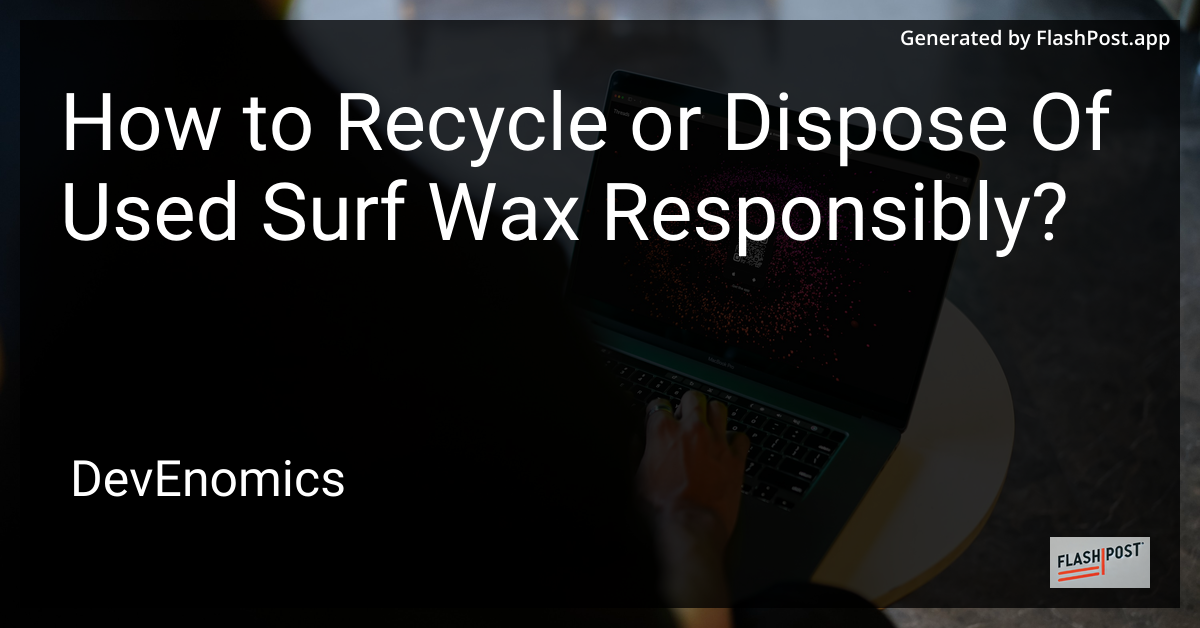

How to Recycle or Dispose Of Used Surf Wax Responsibly?
Surfing is a beloved activity cherished by millions around the globe. Yet, like many outdoor pursuits, it can inadvertently contribute to environmental degradation, particularly through the improper disposal of surf wax. Whether you’re a seasoned surfer or a weekend warrior, learning how to dispose of or recycle used surf wax responsibly is pivotal for protecting marine environments.
Why Responsible Disposal Matters
Surf wax, typically made from paraffin—a byproduct of petroleum—and sometimes infused with synthetic additives, can have a lasting impact on the environment. When not disposed of properly, surf wax can contribute to pollution, affecting marine life and ecosystems. Hence, it is crucial for surfers to adopt eco-friendly practices.
How to Recycle or Dispose of Surf Wax
1. Reuse Whenever Possible
Before considering disposal, think about reusing the surf wax. Melt down small slivers and scraps to form a new block of wax. This process can be done using a double boiler or by placing the wax in a container within a pot of boiling water.
2. Support Eco-Friendly Brands
Opt for eco-friendly wax brands designed with sustainable ingredients like organic beeswax and plant-based additives. These are not only better for the environment but are also easier to biodegrade if they happen to wash away into the ocean.
3. Participate in Wax Recycling Programs
Some companies and surf shops offer wax recycling programs. Collect your used wax and drop it off at participating locations where they can recycle it into new products. Check local surf shops for any ongoing initiatives.
4. Proper Disposal in Landfills
If no recycling options are available, the next best alternative is to dispose of the surf wax in a landfill to prevent it from entering the ocean. Wrap it in a biodegradable material (like newspaper) before putting it in the trash.
Embrace Sustainable Surfing Practices
Adopting additional sustainable practices is key to becoming an environmentally responsible surfer:
- Surfboard Leash: Proper maintenance and use can extend the life of your leash, preventing ocean pollution. For safety tips when using a surfboard leash, click here.
- Choosing the Right Length: Ensure you are using the correct length of surfboard leash to avoid unnecessary purchases and waste. To learn how to choose the right length, check this guide.
- Surfboard Fins Compatibility: Proper compatibility reduces wear and tear on both fins and boards, promoting sustainability. For more on fin compatibility, visit this link.
Conclusion
By adopting responsible recycling and disposal methods for surf wax, we can significantly reduce the environmental impact of surfing. Each small action contributes to preserving our oceans for future generations to enjoy.
Your role as a conscious surfer goes beyond riding waves. It’s about respect for nature and a commitment to sustainable practices that ensure the longevity of both the sport and our planet. Embrace this responsibility and ride your waves knowing you’re doing your part to keep our oceans healthy and vibrant.
